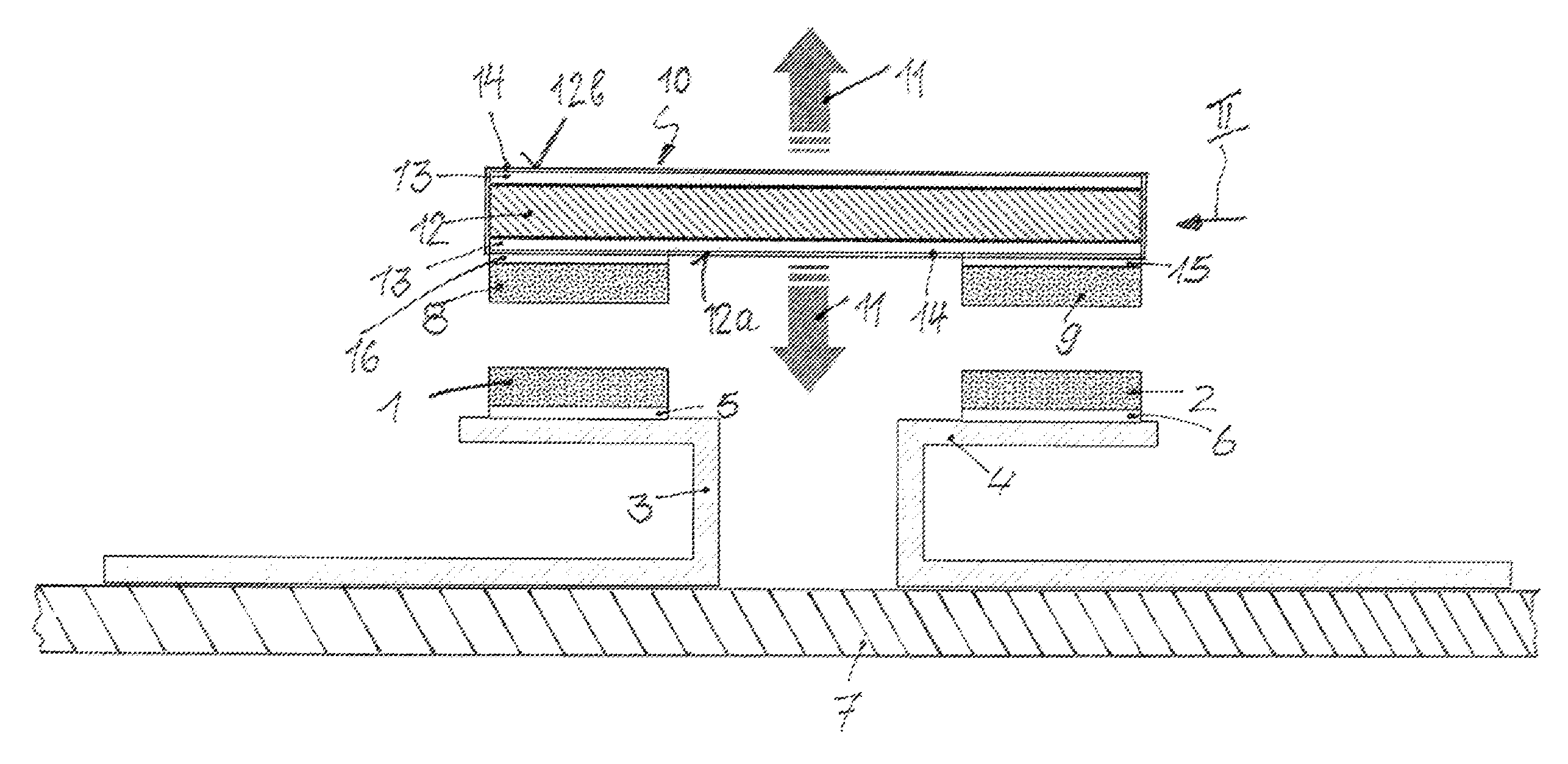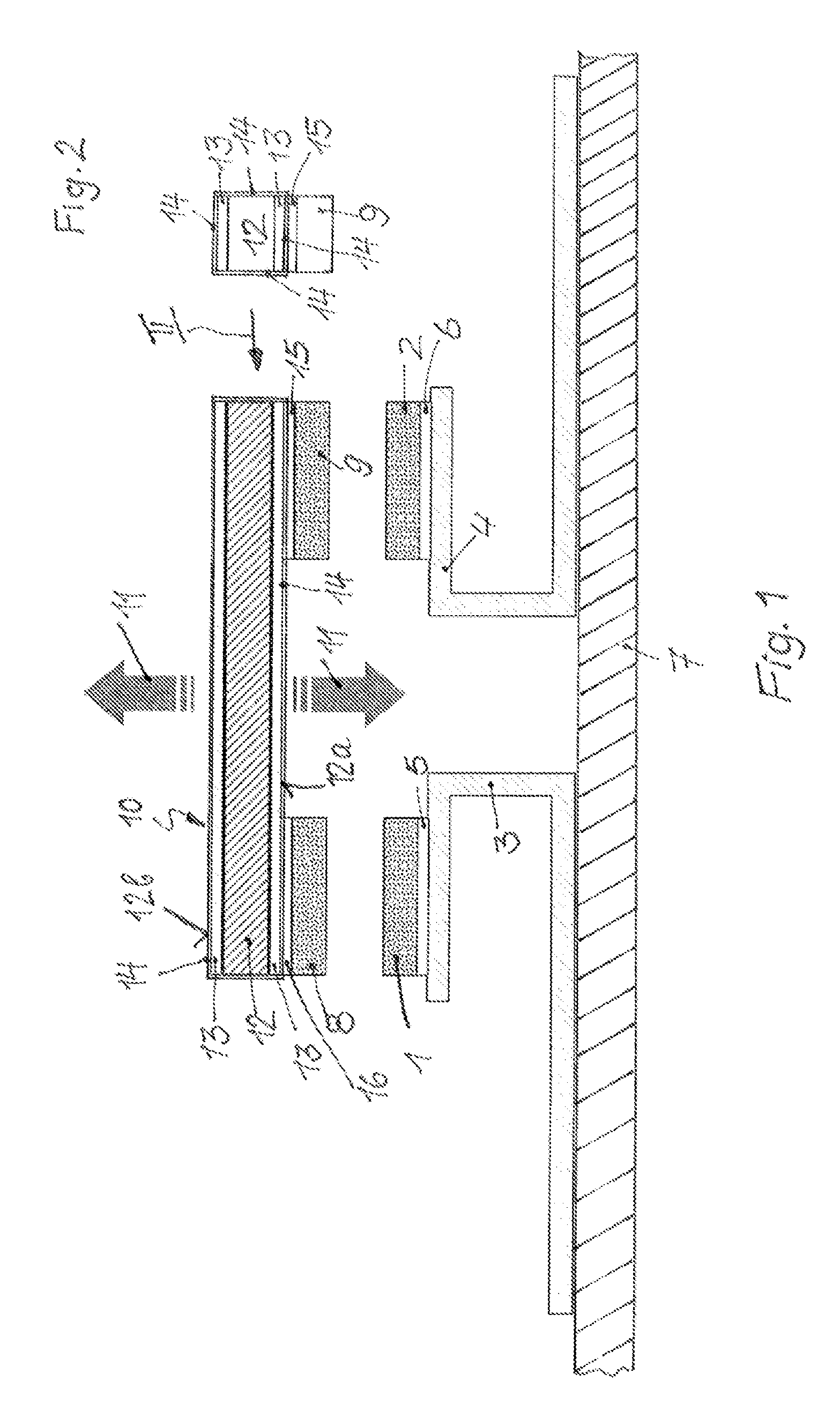Electromechanical low voltage switch
a low-voltage switch and electromechanical technology, applied in the direction of electric switches, electrical appliances, contacts, etc., can solve the problems of reducing the frequency of arcs very significantly, and prolonging the useful life of low-voltage switches, so as to improve the resistance capacity, reduce the mass of the support, and improve the effect of resistan
- Summary
- Abstract
- Description
- Claims
- Application Information
AI Technical Summary
Benefits of technology
Problems solved by technology
Method used
Image
Examples
Embodiment Construction
[0033]The low voltage switch has two fixed contacts 1 and 2, which are attached to two conductor lines 3 and 4, for example by brazing, which lines in turn are mounted on an insulating support plate 7. A brazing solder layer 5 or 6, respectively, is provided between each of the two fixed contacts 1 and 2 and the conductor lines 3 and 4, respectively.
[0034]Two movable contact pieces 8 and 9 lie opposite the two fixed contacts 1 and 2, which pieces are attached to a switching element 10 configured as a contact bridge, which switching element can be moved forward and back by means of an actuator, represented symbolically by the two arrows 11, in order to either bring the contact pieces 8 and 9 into contact with the fixed contacts 1 and 2 that lie opposite them, thereby creating a conductive connection between the two conductor lines 3 and 4, or in order to lift the contact pieces 8 and 9 off from the fixed contacts 1 and 2, thereby interrupting the conductive connection between the two...
PUM
 Login to View More
Login to View More Abstract
Description
Claims
Application Information
 Login to View More
Login to View More - R&D
- Intellectual Property
- Life Sciences
- Materials
- Tech Scout
- Unparalleled Data Quality
- Higher Quality Content
- 60% Fewer Hallucinations
Browse by: Latest US Patents, China's latest patents, Technical Efficacy Thesaurus, Application Domain, Technology Topic, Popular Technical Reports.
© 2025 PatSnap. All rights reserved.Legal|Privacy policy|Modern Slavery Act Transparency Statement|Sitemap|About US| Contact US: help@patsnap.com


